The featured image is Barbara’s shot of the Painted Desert on the north end of this park. We were amazed to find this national park so photogenic and diverse. In addition to the petrified tree logs concentrated in the southern end of the park, we found the Badlands of the Blue Mesa area, and the Painted Desert area in the north just as interesting and even more beautiful and photogenic.




We began our day in the park at the south end Rainbow Forest Museum and Visitor Center. Here, dioramas and exhibits interpret this land of fossils. The park is considered one of the best places in the world to see the fossil record from the Late Triassic Period of 225 million years ago. At that time this area was a lush, wet, tropical landscape of giant conifer trees (up to 200 ft. tall), tree ferns, horsetails, cycads, and giant 40 ft. long crocodile-like reptiles, early dinosaurs, fish, horseshoe crabs, freshwater sharks, clams, snails and crayfish. This was before the age of mammals. Some of the trees along this ancient river system were washed into river channels and quickly buried by silt, mud, and volcanic ash. With very little oxygen they were protected from normal decay. Ground water pecolated through these layers and the absorbent dead wood became saturated with silica (from the ash) and other minerals. The silica quartz slowly bonded with cells of the tree replicating the organic material in perfect detail. The wood became fossilized, or in this case it became petrified stone. The color of petrified wood comes from trace amounts of iron, manganese, copper, and chromium. Scientists believe an obstruction of some kind in the ancient river at this location is why there is such a high concentration of buried logs that became petrified. We toured 3 places where there are large amounts of logs that have eventually been exposed through erosion. The Giant Logs trail is right outside the Visitor Center. We also walked the Crystal Forest trail, where many intact colorful petrified logs can be seen along a paved trail. The Jasper Forest has an overlook with a panoramic view of an area with a high concentration of petrified wood.
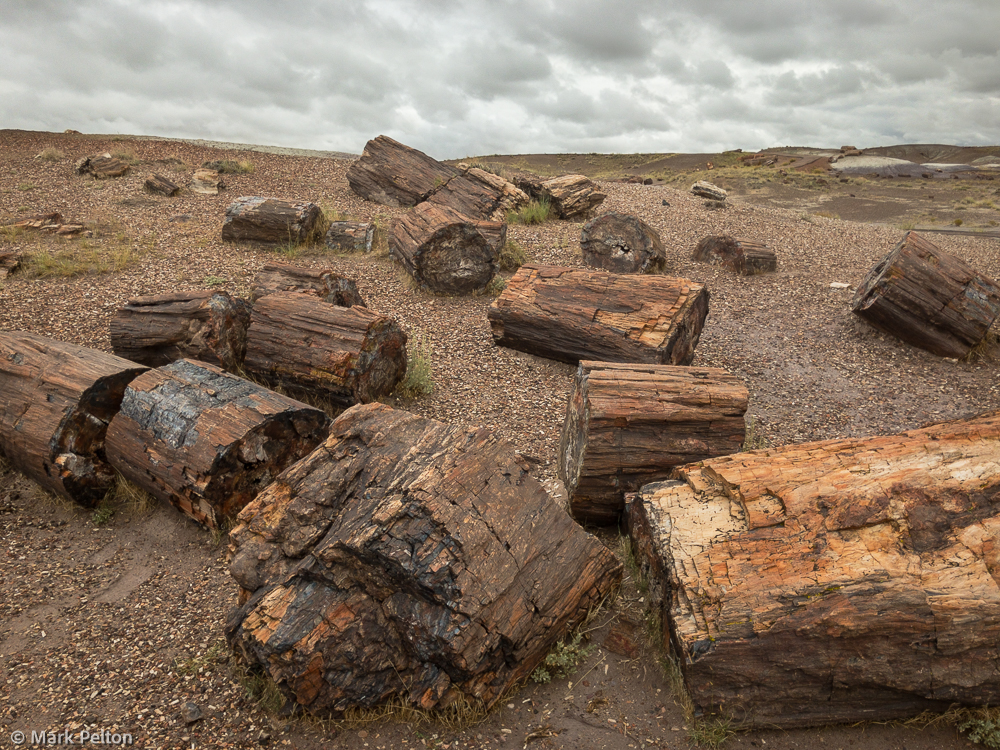
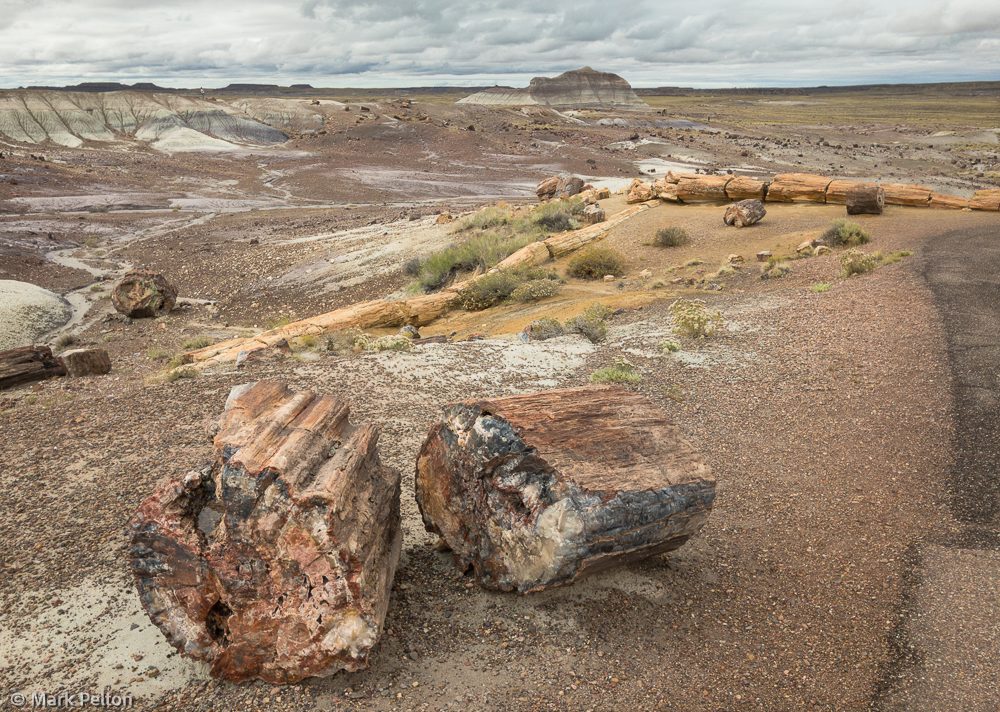

These petrified logs show tree bark, knotholes, even growth rings, all in fine detail. What a fabulous link to earths ancient past.
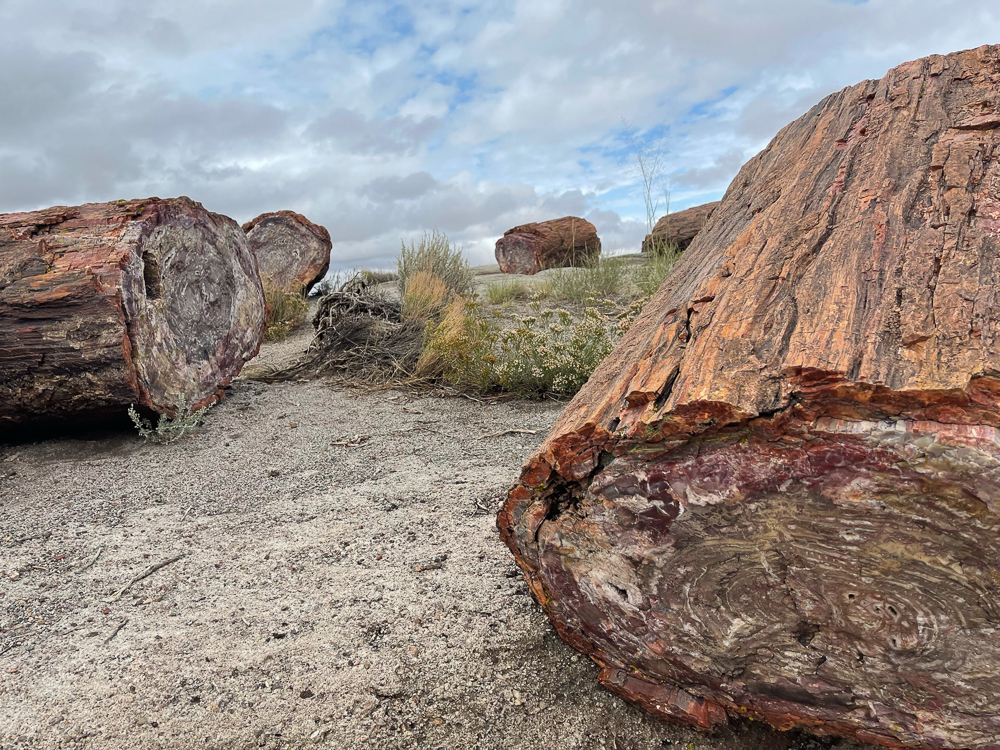

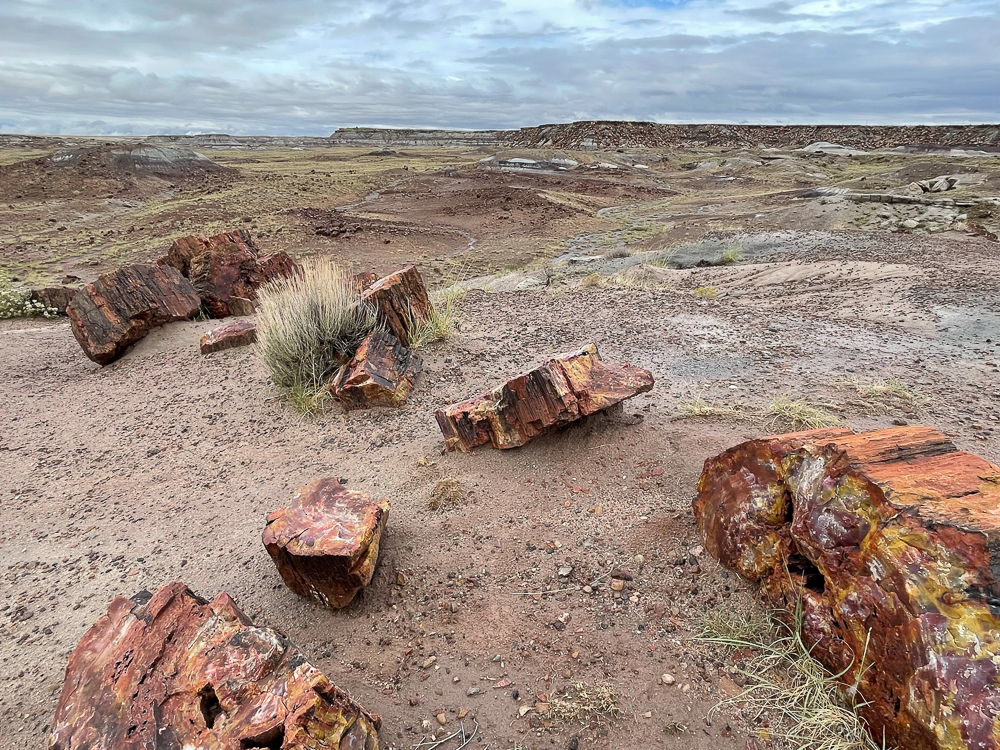
Incredibly, 225 million years ago this area of Arizona was only 4 degrees north of the equator (thats why it was a lush tropical rainforest). Every since that time this land has been slowly creeping north and east (2100 miles) through a force call plate tectonics. The continents hadn’t completely separated at that time. Flowering plants had not yet arrived on the planet. Fossilized cones from the area tell us the trees were conifers. There were also giant tree ferns and gingkos.


As we moved into the Blue Mesa badlands we were astounded how the landscape changed. We drove the 3.5 mile loop road and then did the steep one mile trail that drops off into the most colorful badlands we had ever seen.




The further we got along this trail, the more dramatic and colorful the landscape became.
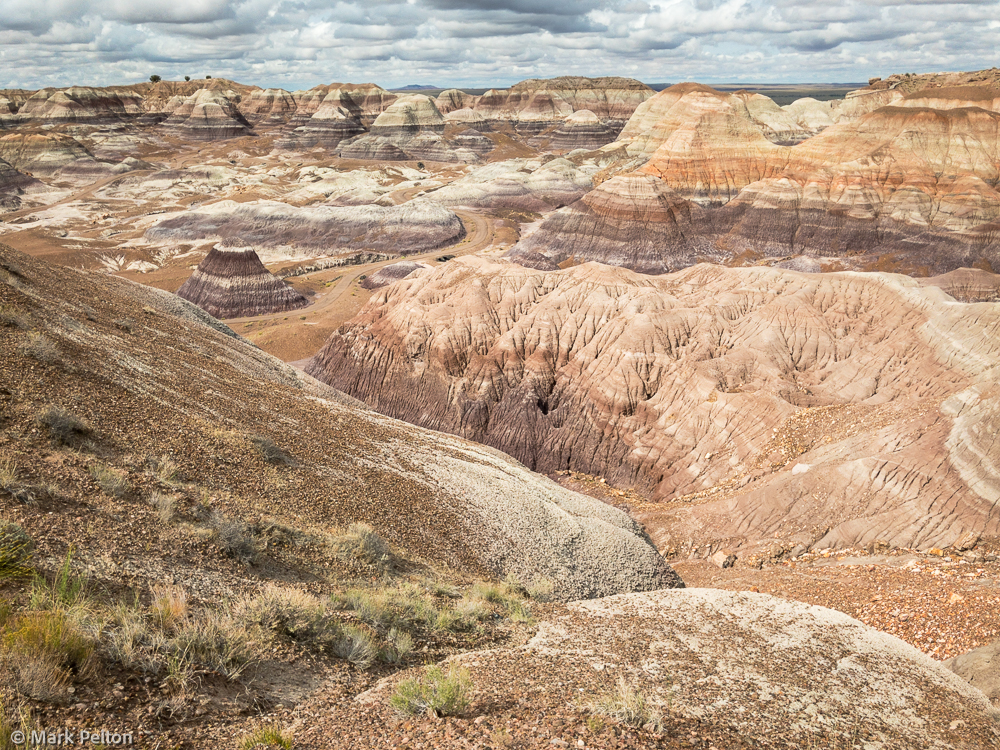

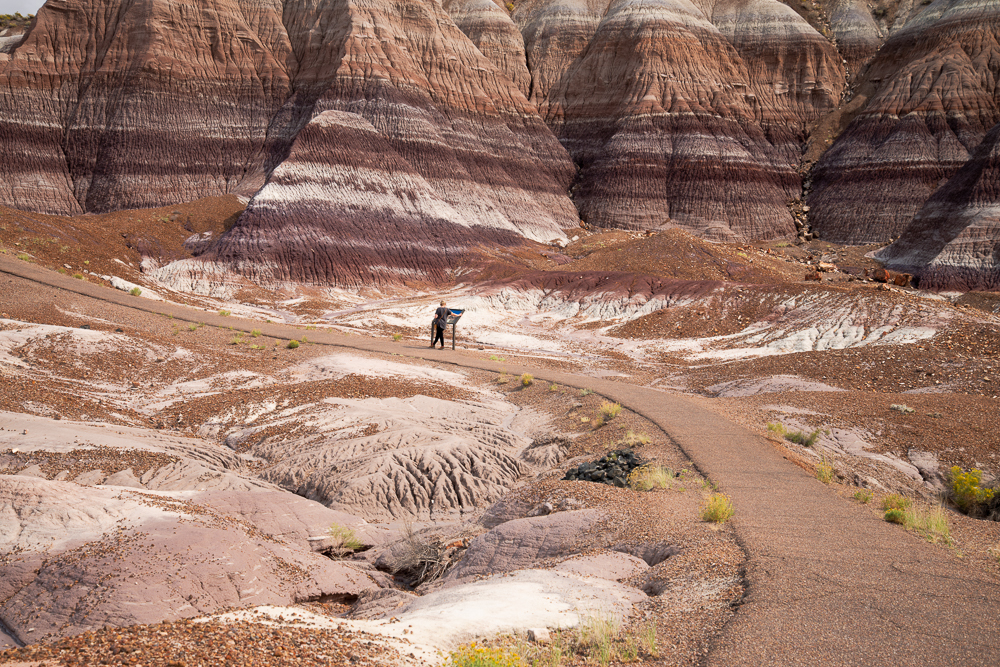
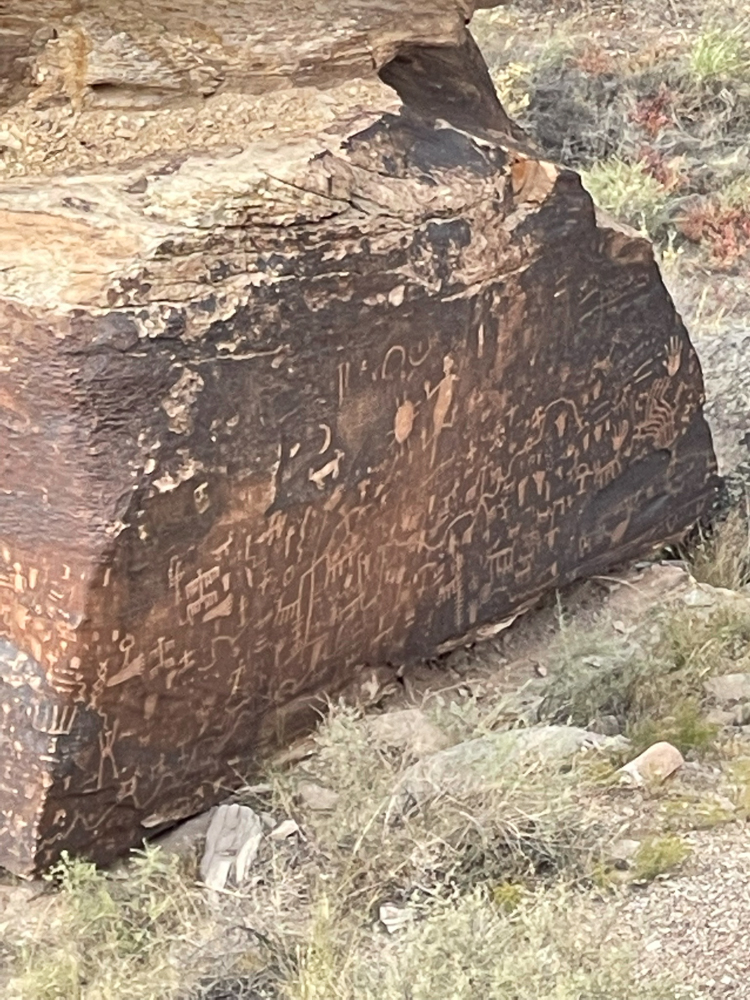
Heading north from Blue Mesa we pulled into the overlook for Newspaper Rock. This is a large rock below a bluff line ( overlook location) that has more than 650 petroglyphs, some more than 2000 years old. Just up the highway is the Puerco Pueblo, ruins from ancestral Puebloan homes occupied 1250-1380 CE.

Since we wanted to get to the Painted Desert overlooks with good late afternoon lighting, we didn’t spend much time at Puerco Pueblo. We were both surprised at the color and the extent of the Painted Desert section of the park. Fortunately, we had good late afternoon lighting and a good sky that made for good photographs. All of the Painted Desert overlooks north of I-40 are good, but the best views for our day were the ones closest to the Painted Desert Inn.



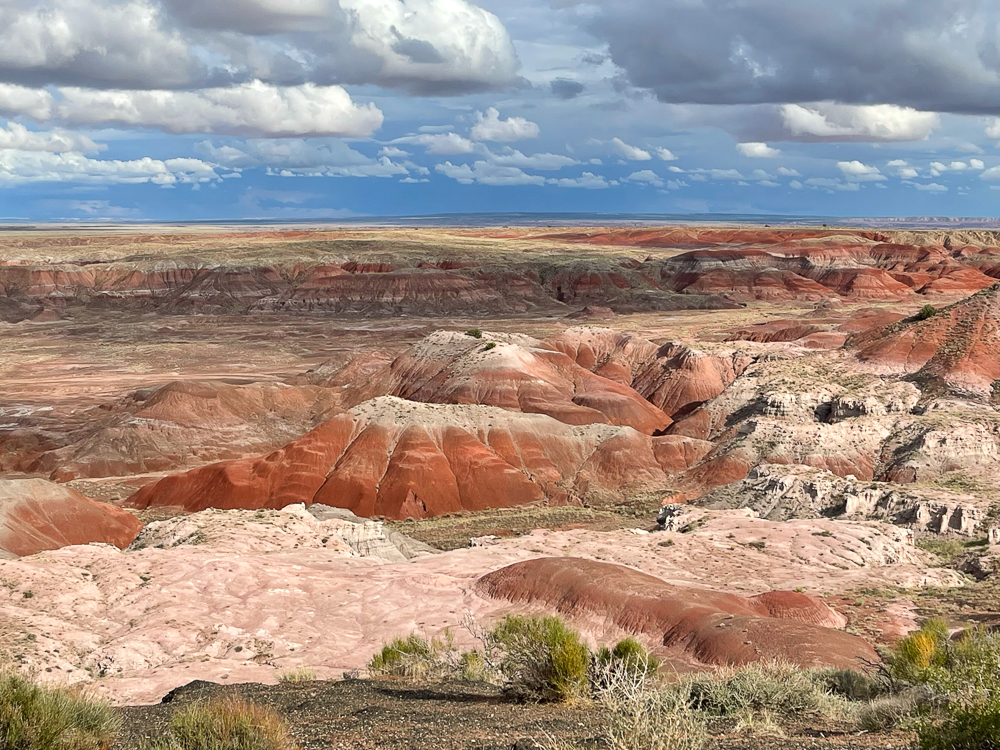




The historic Painted Desert Inn was built by the CCC in the late 1930’s. It originally provided lodging and had a restaurant. It became a “Harvey House” in 1947 as the Fred Harvey Co. took over as the concessionaire. It’s architecture is considered one of the finest remaining examples of this style and era. It is now a National Historic Landmark. Today it is used as a museum that features its history and architecture. Although, it is currently closed because of covid there are plans to revive its future with a small snack bar in addition to the museum. After our day touring this fascinating and scenic national park we spent a little time in the Painted Desert Visitor Center then headed east for Albuquerque.
Till next time.
Happy Trails, Mark Pelton
